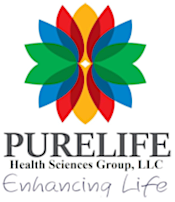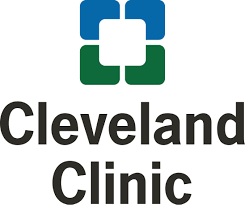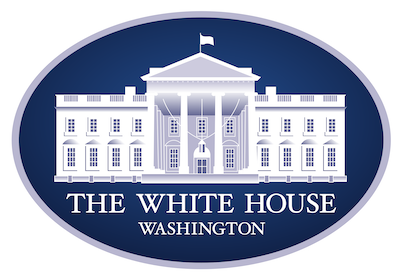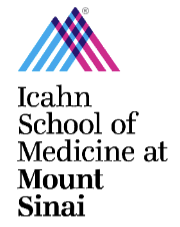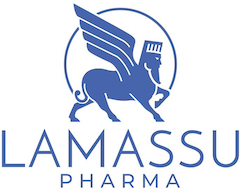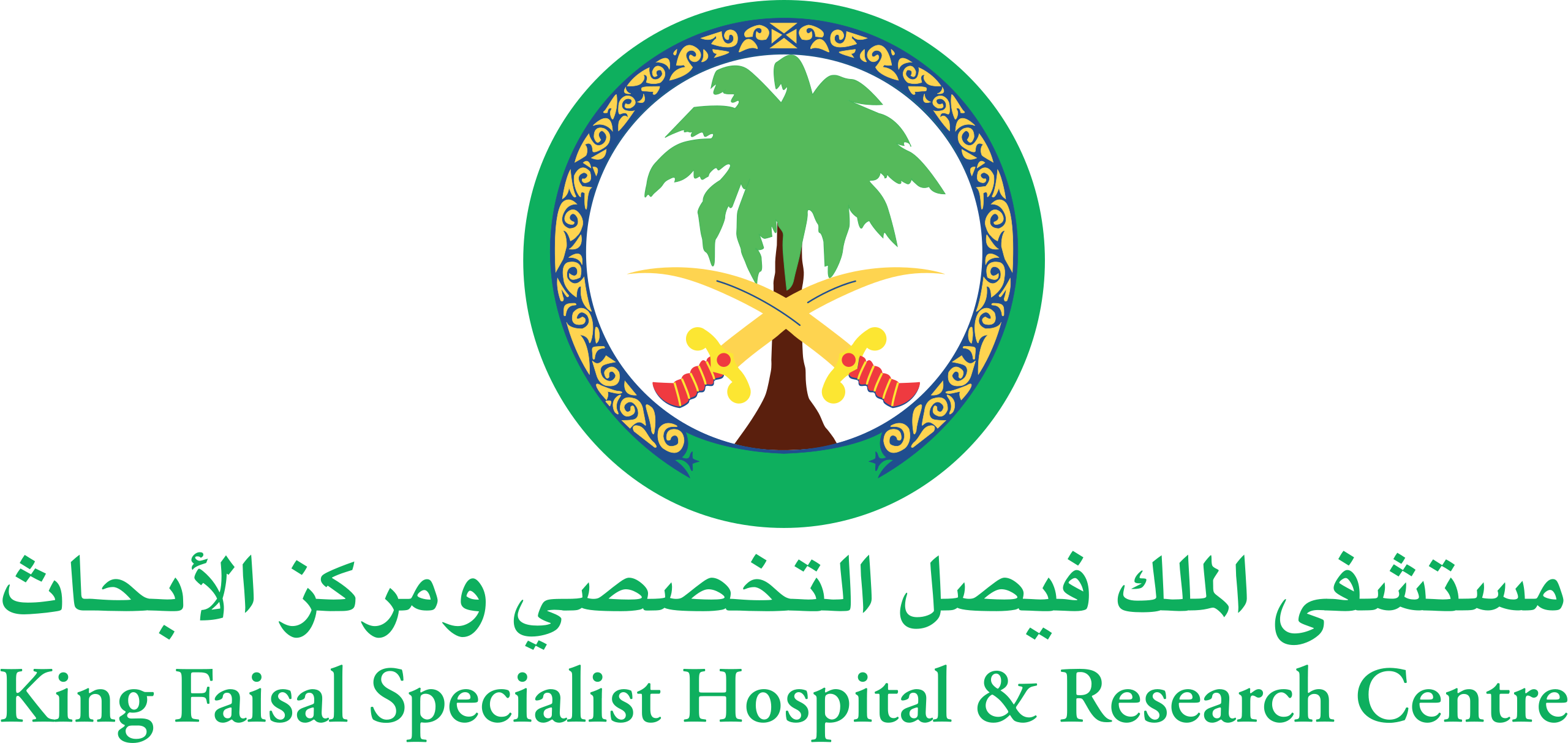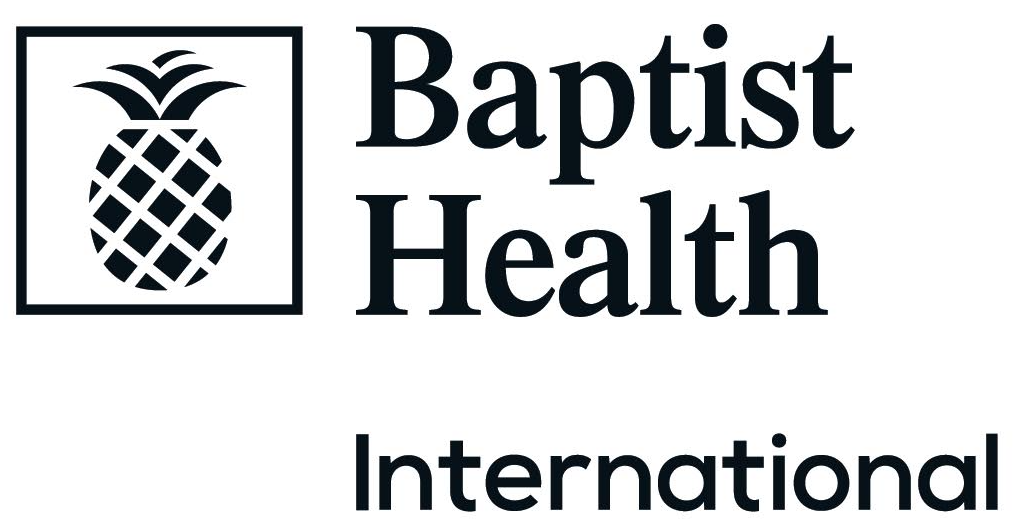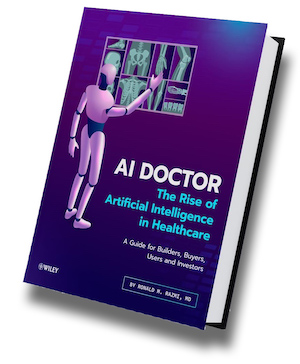Capitalizing on investment trends in new healthcare development cycles requires careful analysis and a strategic approach.
To capitalize on investment trends in new development cycles, it is important to adopt a strategic and informed approach. That said, staying abreast of the latest industry trends and developments is crucial. This involves actively monitoring market reports, engaging with industry experts, attending relevant conferences, and leveraging online resources. By being well-informed, it is easier to identify emerging areas of opportunity and align an investment strategy accordingly.
Secondly, conducting thorough research and due diligence is essential. Evaluate the market potential, competitive landscape, regulatory environment, and potential risks and challenges associated with the investment. This includes analyzing the financial viability of the opportunity and assessing its alignment with your investment goals and risk tolerance. Networking with professionals in the field and seeking expert advice can provide valuable insights and help validate investment decisions.
In summary, capitalizing on investment trends in new development cycles requires a combination of market awareness, thorough research, and networking. By staying informed, conducting due diligence, and seeking expert guidance, investment positions can take advantage of emerging investment opportunities to maximize the potential for success.
Time-critical investments that advance health and business in the Middle East present a new opportunity to drive significant progress in the region's healthcare landscape. By making targeted investments in key areas, such as healthcare infrastructure, digital health, medical tourism, and pharmaceuticals, investors can contribute to improving healthcare access, enhancing patient outcomes, and stimulating economic growth. The Middle East is experiencing rapid population growth, increasing healthcare demands, and a rising focus on healthcare development, making it an attractive market for such investments.
Investing in healthcare infrastructure can address the growing need for quality healthcare facilities, especially in remote or underserved areas. Developing hospitals, clinics, and specialized centers can improve access to care and bolster the region's healthcare capacity. Simultaneously, investments in digital health technologies and telemedicine can revolutionize healthcare delivery, enabling remote consultations, efficient health information exchange, and remote patient monitoring. This technology driven approach can enhance healthcare accessibility and efficiency while leveraging the Middle East's high smartphone penetration rates. Furthermore, investments in medical tourism can tap into the region's potential as a healthcare destination, attracting international patients and boosting local economies. Lastly, supporting the growth of the pharmaceutical industry in the Middle East can contribute to drug discovery, manufacturing, and access to essential medications, fostering health advancements and economic development.
Overall, time-critical investments in advancing health and business in the Middle East present a new opportunity to address the region's healthcare challenges and leverage its potential for growth. By strategically allocating resources and collaborating with local stakeholders, investors can make a meaningful impact, improve healthcare outcomes, and drive economic progress in the region.
Deploying tomorrow's technology for healthcare investments involves a proactive approach to harnessing the potential of cutting-edge innovations. It is crucial to identify and understand the emerging technologies that have the potential to revolutionize healthcare. This includes areas such as artificial intelligence (AI), machine learning, blockchain, virtual reality, genomics, and Internet of Things (IoT). By staying abreast of these advancements, investors can identify specific technologies that align with their investment objectives.
Once the technologies are identified, successful deployment requires careful planning and execution. This involves collaborating with technology experts, healthcare providers, and industry stakeholders to assess the feasibility and viability of implementing these technologies. Investment in the infrastructure, resources, and expertise needed for adoption is essential. Additionally, regulatory considerations, data privacy, and security must be taken into account. Effective deployment of tomorrow's technology in healthcare
investments requires a holistic approach that combines a deep understanding of the technologies, partnerships with relevant stakeholders, and a strategic implementation plan.
In summary, deploying tomorrow's technology for healthcare investments entails identifying promising emerging technologies, understanding their potential impact, and strategi-cally implementing them to drive positive outcomes. By collaborating with experts, considering regulatory factors, and investing in the necessary resources, investors can position themselves to capitalize on the transformative power of technology in the healthcare sector.
Artificial Intelligence (AI) and blockchain are two transformative technologies reshaping the future of healthcare on a global scale. AI is revolutionizing healthcare by enabling advanced data analysis, predictive modeling, and personalized medicine. AI algorithms can analyze vast amounts of patient data, identify patterns, and provide insights that aid in disease diagnosis, treatment planning, and drug discovery. Machine learning algorithms can continuously learn and improve, leading to more accurate diagnoses and optimized treatment plans. Moreover, AI-powered chatbots and virtual assistants can improve patient engagement and provide 24/7 support, enhancing the overall healthcare experience. AI has the potential to revolutionize healthcare delivery, improve patient outcomes, and optimize resource utilization.
Blockchain technology is also making significant strides in healthcare by addressing critical challenges such as data interoperability, security, and privacy. Blockchain provides a decentralized and transparent platform for securely storing and sharing healthcare data. It enables secure and seamless sharing of patient records, ensuring data integrity, privacy, and control. Blockchain can streamline healthcare operations by enabling secure transactions, smart contracts, and efficient supply chain management. Additionally, it can facilitate the integration of Internet of Things (IoT) devices, wearables, and other health monitoring technologies, enabling real-time data collection and remote patient monitoring. The decentralized nature of blockchain technology can foster collaboration among different stakeholders, promote data sharing for research, and improve population health management.
Together, AI and blockchain are reshaping the healthcare landscape globally. They have the potential to improve healthcare outcomes, enhance patient experiences, and drive operational efficiency. As these technologies continue to evolve and find wider adoption, the future of healthcare holds great promise with AI-driven diagnostics, personalized medicine, secure data sharing, and more effective healthcare systems.
Improving communications between regions in the healthcare sector has a profound impact on collaboration and opportunities for doctors, patients, leaders, and investors. Enhanced communication channels enable healthcare professionals to share knowledge, expertise, and best practices across regions, fostering collaboration and advancing patient care. For doctors, improved communication facilitates access to specialized consultations, second opinions, and multidisciplinary discussions. This collaboration can lead to better diagnoses, treatment plans, and outcomes for patients. By breaking down geographical barriers, doctors can tap into a global network of expertise, enabling them to deliver high-quality, evidence-based care.
Improved communications also benefit patients by expanding their access to healthcare resources and expertise beyond their local region. Patients can connect with healthcare providers remotely through telemedicine, video consultations, and virtual health platforms. This enhances convenience, reduces travel burdens, and enables individuals to seek specialized care or second opinions from experts located in different regions. Access to a broader network of healthcare providers and specialists improves patient outcomes and increases opportunities for personalized care. Moreover, better communication channels empower patients to actively engage in their healthcare decision-making, facilitating shared decision-making and patient-centered care.
For healthcare leaders and investors, improved communications between regions create opportunities for collaboration, knowledge sharing, and investment. Leaders can exchange ideas, strategies, and policies with counterparts from different regions, promoting innovation and best practices in healthcare management. Additionally, investors can identify emerging markets, technology solutions, and healthcare projects in other regions, expanding their investment opportunities and diversifying portfolios. Improved communication channels allow leaders and investors to stay informed about global healthcare trends, regulatory environments, and investment prospects, enabling them to make informed decisions and contribute to the growth and advancement of the healthcare sector.
In summary, improving communications between regions in healthcare unlocks collaboration and opportunities for doctors, patients, leaders, and investors. It facilitates knowledge sharing, expands access to specialized care, empowers patients, and enables healthcare leaders and investors to tap into a global network of expertise and investment prospects. By breaking down communication barriers, the healthcare industry can work together more seamlessly to deliver high-quality care, foster innovation, and drive positive change.
Investments in "smart" cities for new and improved healthcare facilities are gaining momentum as urban areas increasingly prioritize the integration of technology and data-driven solutions into their infrastructure. These investments aim to enhance healthcare accessibility, quality, and efficiency within cities. Smart cities leverage technologies such as Internet of Things (IoT), data analytics, telemedicine, and AI to transform healthcare delivery. For example, investment in telemedicine platforms enables virtual consultations, remote monitoring, and timely access to healthcare services. This technology-driven approach allows healthcare providers to reach a larger population and offer more personalized care. Furthermore, investments in data analytics and AI enable cities to analyze vast amounts of healthcare data, identify trends, and make informed decisions for resource allocation, preventive measures, and population health management. These investments contribute to improved patient outcomes, reduced healthcare costs, and a more sustainable healthcare system.
The returns on investments in smart cities for healthcare facilities are significant. By leveraging technology and data, these investments lead to more efficient use of resources, reduced healthcare expenditures, and improved health outcomes. Smart cities enable proactive healthcare management through early detection and intervention, leading to better disease prevention and management. The use of IoT devices and wearables allows for real-time health monitoring, empowering individuals to take control of their health and engage in preventive measures. Additionally, smart cities enhance the coordination and collaboration among healthcare providers, resulting in streamlined care delivery, reduced medical errors, and improved patient experiences. The integration of smart healthcare facilities into the broader urban ecosystem creates a holistic approach to healthcare that benefits both residents and the city as a whole.
Virtual healthcare investments have the potential to revolutionize the healthcare industry by reducing costs, improving patient satisfaction, and enhancing connectivity between patients and caregivers. By leveraging telemedicine, remote monitoring, and virtual health platforms, virtual healthcare investments enable patients to receive quality care from the comfort of their own homes, reducing the need for in-person visits and associated costs. This includes savings on transportation expenses, time off work, and reduced hospital readmissions. Virtual healthcare also improves access to care for patients in remote or underserved areas, eliminating the need for travel and increasing healthcare equity.
Furthermore, virtual healthcare investments enhance patient satisfaction by providing convenient and flexible options for healthcare delivery. Patients can access virtual consultations, receive real-time remote monitoring, and engage in secure communication with their caregivers through digital platforms. This improves accessibility and timeliness of
care, leading to higher patient satisfaction and engagement. Moreover, virtual healthcare investments empower patients to actively participate in their own healthcare management, fostering a sense of empowerment and control over their health.
Virtual healthcare investments also facilitate improved connectivity between patients and caregivers. Through virtual health platforms, patients can maintain ongoing communication with their healthcare providers, receive timely updates on their treatment plans, and access educational resources. This connectivity ensures that patients feel supported and connected to their caregivers, even when physical distances may separate them. It enables continuous monitoring, timely interventions, and personalized care, leading to improved health outcomes and patient experience.
In summary, virtual healthcare investments have the potential to reduce costs, enhance patient satisfaction, and maintain a strong connection between patients and caregivers.
By leveraging telemedicine and virtual health technologies, healthcare providers can deliver high-quality care in a convenient, accessible, and patient-centered manner. These investments contribute to the transformation of healthcare delivery, fostering better outcomes for patients while optimizing resource utilization in the healthcare system.
The value of strategic partnerships with US academic medical centers lies in the benefits of clinical quality and brand recognition. Academic medical centers in the United States are renowned for their excellence in patient care, research, and medical education. Collaborating with these institutions allows international healthcare organizations to tap into their expertise, cutting-edge technologies, and evidence-based practices. By forging strategic partnerships, organizations can enhance the clinical quality of their services, adopting best practices and benefiting from the academic medical center's wealth of knowledge and experience. This can result in improved patient outcomes, streamlined processes, and a higher standard of care.
In addition to clinical quality, partnering with US academic medical centers brings the advantage of brand recognition. These institutions have established strong reputations both domestically and internationally, often being recognized as leaders in healthcare. By affiliating with an esteemed academic medical center, healthcare organizations gain credibility and reputation in the eyes of patients, healthcare professionals, and industry stakeholders. This brand recognition can attract patients seeking high-quality care and can also open doors to collaborations, research opportunities, and potential investors. Strategic partnerships with US academic medical centers provide a platform for organizations to leverage the reputation and brand value of these institutions, positioning themselves as trusted healthcare providers and enhancing their market presence
Assessing and investing in Middle East pharmaceutical markets hold significant importance due to several factors. The Middle East region is experiencing population growth, rising healthcare spending, and an increasing burden of chronic diseases. These factors drive the demand for pharmaceutical products and create opportunities for market growth. By assessing the Middle East pharmaceutical markets, investors can identify market gaps, understand the local healthcare landscape, and tailor their investment strategies accordingly. Investing in these markets allows pharmaceutical companies to expand their market presence, provide essential medications to the population, and contribute to improving public health.
Secondly, the Middle East region has been making efforts to strengthen its domestic pharmaceutical manufacturing capabilities. Several countries in the region have implemented initiatives to reduce dependency on imported drugs and encourage local production. This presents an opportunity for investors to support and participate in the growth of the regional pharmaceutical industry. Investing in local manufacturing facilities, research and development centers, and partnerships with local pharmaceutical companies can not only yield financial returns but also contribute to job creation, technology transfer, and the overall economic development of the region. Furthermore, assessing the Middle East pharmaceutical markets helps investors navigate the regulatory landscape, understand pricing and reimbursement policies, and establish partnerships with healthcare providers and distributors, ensuring a solid foundation for successful investments.
In summary, assessing and investing in Middle East pharmaceutical markets are crucial due to the region’s population growth, increasing healthcare needs, and the emphasis on domestic pharmaceutical manufacturing. By strategically investing in these markets, pharmaceutical companies can address local healthcare demands, contribute to regional economic growth, and establish long-term partnerships. Evaluating market dynamics, regulatory frameworks, and local healthcare priorities enables investors to make informed decisions and capitalize on the growing opportunities in the Middle East pharmaceutical sector.
Cancer prevention and treatment represent a compelling case study in health advancement, patient-centered care, and cutting-edge personalized therapies. Over the years, advancements in cancer research and treatment have transformed the landscape of cancer care, leading to improved outcomes and enhanced patient experiences. Prevention efforts, such as public health campaigns promoting healthy lifestyles and early detection screenings, play a critical role in reducing the incidence and burden of cancer. By raising awareness, promoting risk reduction strategies, and facilitating early diagnosis, cancer prevention efforts empower individuals to take control of their health and minimize their cancer risk.
When it comes to cancer treatment, patient-centered care has become a cornerstone of modern oncology. Personalized medicine, driven by genomic profiling and molecular diagnostics, enables healthcare providers to tailor treatment plans to the specific characteristics of a patient's cancer. This approach allows for more precise therapies, minimizing unnecessary side effects and maximizing treatment effectiveness. Furthermore, patient-centered care involves shared decision-making, in which patients are actively involved in choosing treatment options based on their preferences, values, and goals. This collaborative approach not only improves patient satisfaction but also leads to better treatment adherence and outcomes.
Cutting-edge personalized therapies have revolutionized cancer treatment. Precision oncology strategies, such as targeted therapies, immunotherapies, and gene therapies, are transforming the way cancers are treated. Targeted therapies specifically attack cancer cells based on their molecular characteristics, leading to more effective and less toxic treatments. Immunotherapies harness the body's immune system to recognize and eliminate cancer cells, offering new possibilities for long-term remission and improved survival rates. Gene therapies, including CAR-T cell therapy, involve genetically modifying a patient's immune cells to enhance their ability to fight cancer. These breakthrough therapies exemplify the potential of personalized medicine in delivering highly effective and individualized cancer treatments.
In summary, the case of cancer prevention and treatment highlights the remarkable progress in health advancement, patient-centered care, and personalized therapies. Through prevention efforts, patients are empowered to reduce their cancer risk and seek early detection. Patient-centered care ensures that treatment decisions align with individual patient needs and preferences. Cutting-edge personalized therapies leverage genomic information and innovative approaches to target cancer cells with precision. The ongoing advancements in cancer care underscore the importance of a comprehensive and patient-centric approach in improving outcomes and transforming the landscape of cancer prevention and treatment.
Private equity and academic medicine, when combined, can form an innovative and disruptive power couple that drives transformative advancements in the healthcare industry. Private equity firms bring financial resources, business acumen, and operational expertise, while academic medicine institutions contribute cutting-edge research, clinical expertise, and a commitment to education. Together, they have the potential to revolutionize healthcare delivery, technology adoption, and patient outcomes.
Private equity investments in academic medicine can provide the necessary funding to accelerate research and development, expand infrastructure, and drive innovation. This infusion of capital enables academic medical centers to invest in state-of-the-art technologies, attract top talent, and establish centers of excellence in specialized fields. Privateequity firms bring strategic guidance and operational efficiency to optimize the financial performance of these institutions, allowing them to focus
on their core mission of research, education, and patient care. By collaborating with private equity partners, academic medicine can leverage their expertise in scaling businesses, streamlining operations, and maximizing returns on investment.
The partnership between private equity and academic medicine can also foster disruptive innovations in healthcare. Private equity firms often have a pulse on emerging technologies and market trends, while academic medicine institutions have a deep understanding of clinical needs and research breakthroughs. Together, they can identify and invest i groundbreaking healthcare solutions, such as digital health platforms, precision medicine advancements, and novel therapies. This collaborative approach can lead to the development of transformative healthcare models, novel treatment modalities, and improved patient experiences. The disruptive power couple of private equity and academic medicine has the potential to challenge traditional healthcare paradigms, drive industry wide change, and ultimately improve health outcomes on a global scale.
In summary, the partnership between private equity and academic medicine brings together financial resources, operational expertise, research capabilities, and clinical excellence. This collaboration has the potential to disrupt the healthcare industry, driving innovation, transforming healthcare delivery, and improving patient outcomes. By combining the strengths of private equity firms and academic medicine institutions, this power couple can shape the future of healthcare by investing in cutting-edge technologies, fostering disruptive innovations, and reimagining the way healthcare is delivered and experienced
Artificial Intelligence (AI) is the technology of our time. In the last decade, astounding progress has been
made in
applied AI in all sectors of the economy.
Most recently, the launch of ChatGPT has captured the imagination of everyone and the number of use cases have
expanded rapidly. Healthcare promises to be a fertile ground for this technology. Given the exploding amounts of
data used in healthcare, including genomics, remote monitoring, and sociobehavioral data, AI will not be a
luxury.
AI will be the foundational technology that will uncover key insights in all of this data and allow us to make
rapid
progress in finding new treatments and making sure those can be delivered at scale. The range of use cases
include
drug discovery, population health management, clinical workflow optimization, diagnostics, therapeutics,
decision
support, and more.
Although AI holds immense promise in healthcare, its adoption will happen in waves. Those waves will be based on
the
types of use cases that require urgent solutions, availability of the required data, payer reimbursement,
workflow
issues, and more. Public and private investors will need to carefully analyze these issues for the types of AI
solutions they are considering. Billions of dollars have been invested in health AI companies that have not been
able to gain traction. Ensuring that capital flows into the companies that are solving the types of issues that
have
ready-to-adopt use cases will be critical to create momentum. How can entrepreneurs and investors identify these
use
cases? What is the best way to accelerate success for the exciting new AI innovations that will improve the
health
of the world population? We will examine these issues in this session.
The world has recognized that civilization has entered a decisive decade for addressing the impending climate crisis due to a convergence of urgent factors that demand immediate action. First and foremost, the scientific consensus on climate change is unequivocal, with overwhelming evidence indicating that human activities, particularly the burning of fossil fuels, are driving global temperatures to dangerous levels. The Intergovernmental Panel on Climate Change (IPCC) and numerous other reputable scientific institutions have issued alarming warnings about the escalating impacts of climate change, including more frequent and severe heat waves, hurricanes, droughts, and flooding, all of which we have experienced globally just this summer. The consequences are already being felt, with communities around the world experiencing the devastating effects of extreme weather events and rising sea levels. Additionally, there is a growing recognition of the need for swift action on climate change at the global level. The Paris Agreement, which Saudi Arabia ratified along with nearly every country in the world, set ambitious targets to limit global warming to well below 2 degrees Celsius above pre-industrial levels.
As we approach the mid-2020s, countries are under increasing pressure to meet their emission reduction commitments and accelerate the transition to a low-carbon economy. Public awareness and activism on climate change have also surged, with a younger generation demanding immediate action to secure their future and the health of the planet. With the window of opportunity for effective climate action rapidly closing, the next decade is seen as a "make-or-break" period where decisive and "impactful measures" must be taken to mitigate the worst consequences of climate change and help accelerate transition to a sustainable, carbon-neutral future. And If we don't act now to take effective and impactful measures to prevent and mitigate climate change, the outcomes will be severe and far-reaching. Here are some of the possible key impacts:
Food and Water Scarcity Impact on Humanity: Changes in temperature and precipitation patterns can affect food production and water availability. This will be a leading cause for food shortages, price spikes, and conflicts over dwindling resources.
Health Risks Impact on Humanity: Climate change is currently exacerbating health problems, from heat-related illnesses to the spread of vector-borne diseases like malaria and dengue fever.
Social and Political Instability Impact on Humanity: Tragically, climate change is creating socially induced displacement; resource scarcity; and, conflicts over critical resources that continue to impact social unrest and even regional, or worse, global conflicts.
Rising Temperature Impact on Humanity:b> Global temperatures will continue to rise, as they are now, leading to more frequent and severe heat waves. This is currently resulting in heat-related illnesses, reduced agricultural productivity, and increased energy demands for cooling.
Extreme Weather Impact on Humanity: We have already seen an increase in the frequency and intensity of extreme weather events such as hurricanes, droughts, floods, and wildfires. These events are causing widespread destruction, displacement of communities, and loss of life.
Rising Sea Level Impact on Humanity: Melting ice caps and glaciers, coupled with the thermal expansion of seawater, are leading to rising sea levels. This now threatens coastal communities, infrastructure, and ecosystems, potentially displacing millions of people.
Economic Impact On Humanity: Climate change is severely affecting global economies by damaging infrastructure, reducing agricultural yields, increasing insurance costs, all of which are leading to increased healthcare expenses due to climate-related health issues.
Ecosystem Disruption Impact on Humanity: Many ecosystems and species are vulnerable to climate change, leading to habitat loss, species extinction, and disruptions in ecosystems that provide essential services like pollination and water purification.
In short, the failure to address climate change poses a dire threat to the well-being of humanity and the planet. That said, preventing and mitigating climate change is not only a moral and social imperative but also essential for the long-term sustainability and the subsequent survival impact on the human civilization. Simply stated, it requires a concerted global effort, on everyone's part, to reduce greenhouse gas emissions. More importantly, it's a "must do" for everyone to transition together and adapt to renewable energy sources that are already underway.
The rise and cost of untreated mental health issues pose significant challenges to individuals, communities, and societies at large. As the prevalence of mental health conditions increases, the burden of untreated mental illness becomes more apparent. Untreated mental health issues can lead to severe consequences, including impaired quality of life, reduced productivity, strained relationships, and increased healthcare costs.
The rise in untreated mental health issues can be attributed to various factors, including stigma, limited access to mental healthcare services, and a lack of awareness or understanding of mental health. Stigma surrounding mental health often prevents individuals from seeking help or discussing their struggles openly. This perpetuates a cycle of silence and avoidance, leading to untreated conditions and worsening symptoms over time. Additionally, limited access to mental healthcare services, especially in underserved areas, can prevent individuals from receiving timely and appropriate treatment. This further exacerbates the impact of untreated mental health issues.
The cost of untreated mental health issues extends beyond the individual and has societal implications. Untreated mental health conditions contribute to reduced productivity and absenteeism in the workplace, resulting in economic losses. Mental health issues also strain healthcare systems, with increased emergency room visits, hospitalizations, and utilization of other healthcare resources. Moreover, untreated mental health conditions can lead to co-occurring physical health problems, further escalating healthcare costs. The indirect costs, such as the impact on families, communities, and the criminal justice system, are significant as well.
Addressing the rise and cost of untreated mental health issues requires comprehensive strategies. These include reducing stigma through education and awareness campaigns, improving access to mental healthcare services, integrating mental health into primary care settings, and promoting early intervention and prevention efforts. By investing in mental healthcare infrastructure, training healthcare professionals, and implementing evidence-based interventions, societies can mitigate the consequences of untreated mental health issues, improve outcomes for individuals, and alleviate the economic burden on healthcare systems and society as a whole.





